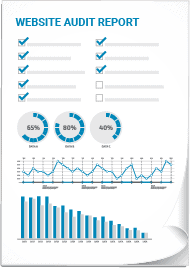Table of Contents
Nonprofit organizations play a crucial role in our society, providing assistance and support to those in need. However, in order to effectively carry out their missions, these organizations need the support of volunteers and donors. In today’s digital age, a nonprofit’s website is often the first point of contact with potential supporters. It is essential that these websites are designed in a way that not only attracts visitors but also encourages them to take action. In this article, we will explore some web design techniques that can help nonprofits convert website visitors into supporters.
1. Highlight Your Mission
The mission of a nonprofit organization is the driving force behind its work. It is important that your website clearly communicates this mission and what you hope to achieve. Visitors should be able to understand the purpose of your organization and what steps they can take to support it. For example, the website of Advocates for Children and Youth (ACY) clearly states their mission and what they work for. Similarly, Beyond Bars Animal Rescue provides clear options for visitors to choose the type of support they want to offer.
2. Embrace Visual Storytelling
Visuals can be a powerful tool in conveying the mission and impact of a nonprofit organization. By using compelling images and videos, you can quickly appeal to people’s emotions and encourage them to take action. For example, Breast Cancer Action includes photos from a recent event on their homepage slider, showcasing the impact of their work. By incorporating visual storytelling into your website, you can effectively engage visitors and make your mission clear from the moment they land on your homepage.
3. Leverage Content to Get Your Supporters Involved
Your website should provide clear instructions on what visitors should do next and how their actions can make a difference. Polaris, an organization that fights against human trafficking, has three prominent calls-to-action on their homepage, giving visitors multiple options for getting involved. Interactive content, such as quizzes or maps, can also be effective in engaging visitors and encouraging them to take action. For example, Power Shift uses an interactive map to show where there is a need for groups fighting against fossil fuel projects. By leveraging content and providing clear calls-to-action, you can effectively engage visitors and turn them into supporters.
4. Make it Easy for Visitors to Donate
Fundraising is essential for nonprofit organizations, so it is important to make the donation process as easy as possible for visitors. Your website should have a clear and easily accessible donation button or link on every page. Clearly communicate what their donation will do and how it will make a difference. Consider offering options for monthly giving and providing information about matching gift programs. Additionally, don’t forget to create a donor “thank you” page to show your appreciation and provide additional information about your organization’s impact.
5. Volunteering Should be Simple Too
Volunteers play a vital role in the success of many nonprofit organizations. It is important to make it easy for potential volunteers to find information about available opportunities and how to get involved. Offer a variety of volunteer opportunities to accommodate different schedules and skill sets. Consider offering online volunteer opportunities for those who are not able to volunteer in person. By making the volunteering process simple and accessible, you can attract more volunteers and expand your organization’s reach.
6. Offer Options for Newsletter Opt-In
Newsletters are a valuable tool for nonprofit organizations to communicate with their supporters. When collecting email addresses for your newsletter, provide options for subscribers to choose what types of information they want to receive. This allows you to tailor your communications to their specific interests and preferences. Additionally, consider segmenting subscribers based on factors such as donation history, location, and volunteer type. This will help you create more targeted marketing campaigns and build stronger relationships with your supporters.
7. Build a Mobile-Friendly Website
With the increasing use of mobile devices, it is essential that your nonprofit’s website is mobile-friendly. Visitors should be able to easily navigate your website and find the information they need, regardless of the device they are using. Use responsive design techniques to ensure that your website adapts to different screen sizes and orientations. St. Jude is an example of a nonprofit with an excellent mobile website, with all the important information easily accessible at the top of the page.
8. Tap into Social Media Marketing
Social media can be a powerful tool for nonprofits to reach a wider audience and engage with their supporters. Encourage donors to share their contributions on social media by providing “I donated!” badges or hashtags. Make it easy for visitors to share your website content by including social sharing buttons. Consider using plugins to pull in posts from donors who have shared their contributions on social media, providing them with recognition and further promoting your cause.
In conclusion, web design plays a crucial role in attracting and engaging supporters for nonprofit organizations. By highlighting your mission, embracing visual storytelling, leveraging content, making donation and volunteering processes simple, offering options for newsletter opt-in, building a mobile-friendly website, and tapping into social media marketing, you can create a website that effectively converts visitors into supporters. Remember, when supporters feel that their actions make a difference, they are more likely to continue supporting your organization in the future.


